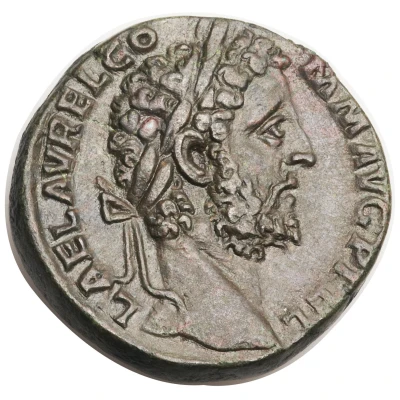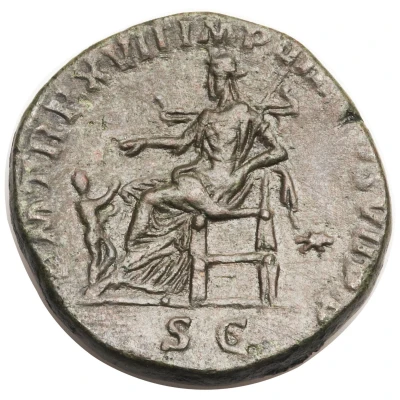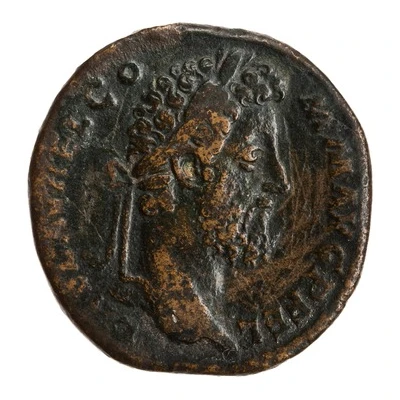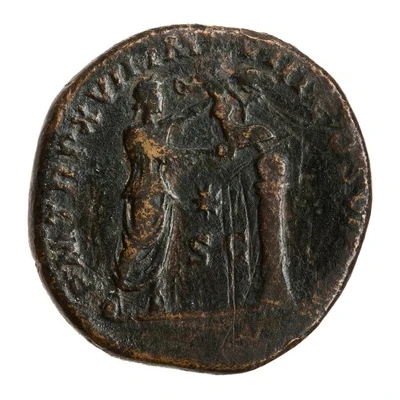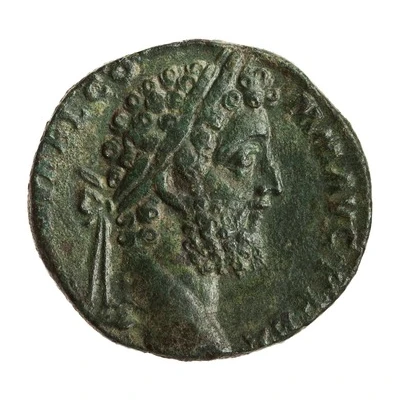
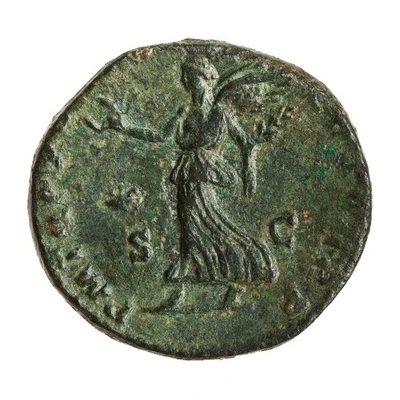

© American Numismatic Society (ANS)
Sestertius - Commodus P M TR P XVII IMP VIII COS VII P P S C; Victory
192 year| Bronze | 22.8 g | 30 mm |
| Issuer | Rome › Roman Empire (27 BC - 395 AD) |
|---|---|
| Emperor | Commodus (Lucius Aurelius Commodus) (177-192) |
| Type | Standard circulation coin |
| Year | 192 |
| Value | 1 Sestertius = ¼ Denarius |
| Currency | Denarius, Reform of Augustus (27 BC – AD 215) |
| Composition | Bronze |
| Weight | 22.8 g |
| Diameter | 30 mm |
| Shape | Round (irregular) |
| Technique | Hammered |
| Orientation | Variable alignment ↺ |
| Demonetized | Yes |
| Updated | 2024-10-06 |
| Numista | N#266005 |
|---|---|
| Rarity index | 100% |
Reverse
Victory, winged, draped, advancing left, holding wreath in extended right hand and palm sloped over left shoulder in left hand; in field, star.
Script: Latin
Lettering: P M TR P XVII IMP VIII COS VII P P S C
Translation:
Pontifex Maximus, Tribunicia Potestate Septima Decima, Imperator Octavum, Consul Septimum, Pater Patriae. Senatus Consultum.
High priest, holder of tribunician power for the 17th time, supreme commander (Imperator) for the eighth time, consul for the seventh time, father of the nation. Decree of the senate.
Comment
Mass varies: 19.38–25.53 g;Diameter varies: 28–32 mm;
Example of this type:
American Numismatic Society (ANS)
Source:
Online Coins of the Roman Empire (OCRE)
Interesting fact
One interesting fact about this coin is that it features an image of the Roman goddess Victory on the reverse side, which was a common motif on Roman coins during the reign of Commodus. The image of Victory was meant to symbolize the Roman Empire's military prowess and its ability to conquer and dominate other nations. The inclusion of this image on the coinage of Commodus' reign was likely intended to reinforce his image as a powerful and victorious leader, and to promote the idea that the Roman Empire was at the height of its power and influence under his rule.
